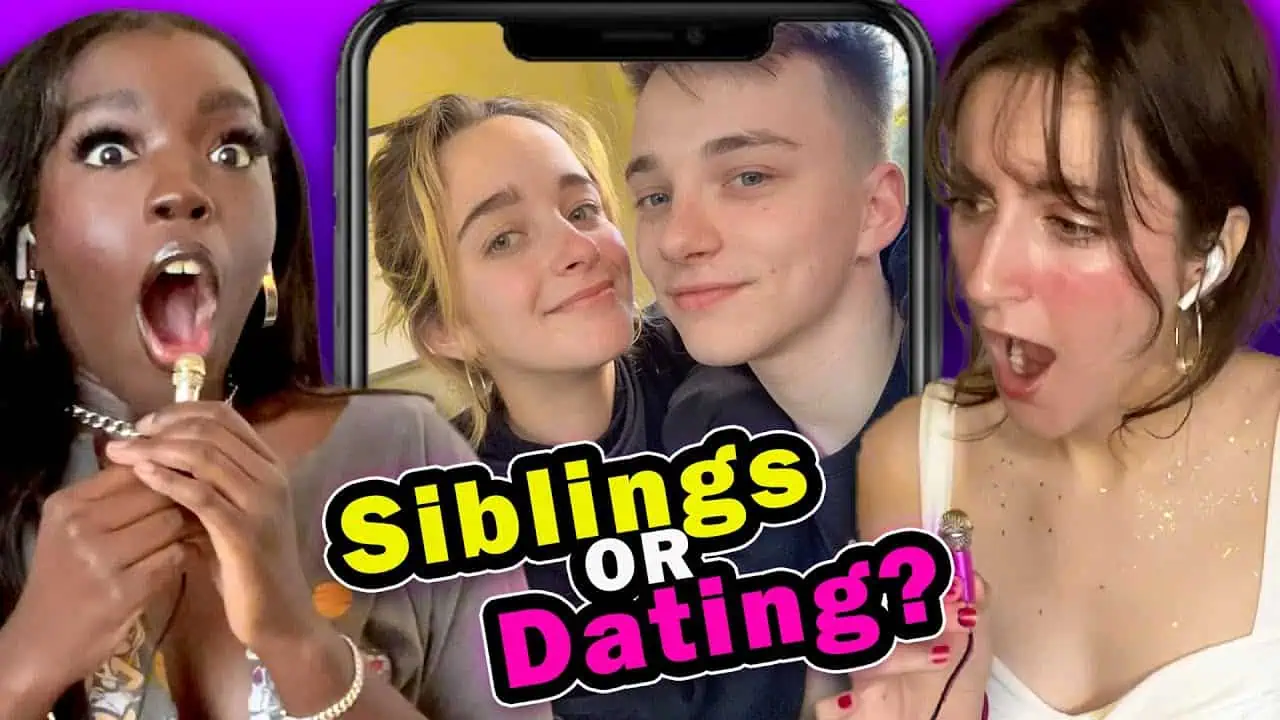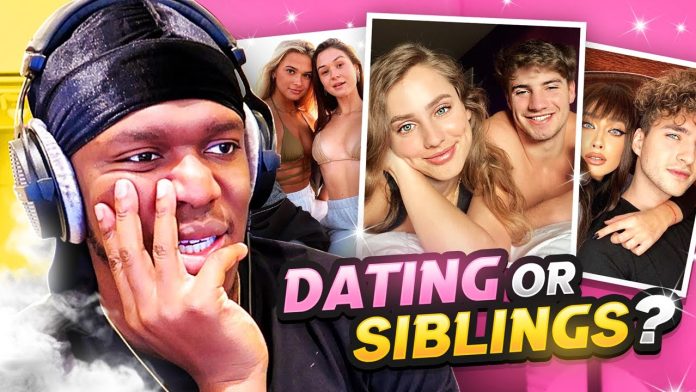Siblings or dating, “That are they siblings, or do they date?” has become the favorite guessing game of the Internet — by scanning pictures of couples or pairs of people to guess whether they’re siblings or romantic partners.
The trend gone viral sees everyone around the world from body language to facial features in a bid to unmask the truth. But above it being an exciting game online, the “sibling or dating” phenomenon questions deeper notions of human cognition, cultural norms, and how we think about relationships. In this article,
we’ll look into why people find it this exciting, the psychological aspect of the phenomenon, how body language plays into it, and why we sometimes mistake family bonds for romantic connections.
“Sisterhood or dating?” Origin and rise of
The “sibling or dating” probably began as a fascinating game for social media users to share pictures of themselves and their sibling or partner to stump up followers. In no time, it blossomed into dedicated accounts and online communities, particularly on the social media platforms of Instagram and Twitter,
where pages specifically dedicated to the game gained massive following.
Much of the attention is put toward the fact that some couples look so much alike. Study research has shown that people tend to be attract to those with whom they identify; this is called congruence. This can explain why some couples might even look like siblings-baffling viewers, rather than making serious judgments about their relationship status based on what they look like. Let’s give it a shot.
Why are we drawn to sports?
The “sibling or dating” game, on its face, is simply a frivolous guessing game, but there is certainly more to it than our infatuation. Here are a few reasons why we are so captivated:
Concept Challenge: People are naturally nosy, and nothing piques their interest more than solving a mystery solution-and “Sibling or Dating” positions itself as the modern puzzle. Scanning facial expressions, body language, and shared physical characteristics will challenge viewers to spot slight (or not so slight) clues that tell them whether two people are siblings or dating.
Gazing into the dynamics of relationships: The game sheds light on all possible ways love is expressed. Cultural backgrounds, personal boundaries, and levels of comfort all play their roles in shaping the ways intimacy is expressed between bodies or through other means. Such differences can be so vast and analysing them can tell us a lot about the dynamics of different relationships.
Mirror Image Attraction People tend to like their mates for looking like them. Psychologists credit this with being due to something called implicit egocentrism. The theory is that one is attracted to those characteristics that they can see in themselves or members of their family, and that is the reason why couples have such an astonishing similarity.
Social Media Factor: Social media basically fueled our curiosity about comparisons by creating viral content that satisfies one’s need for engagement and sharing. This allows users to actively participate, not just by guessing but also by sharing their “siblings or dating” photos and thus creating a shared experience.
Body Language in Deciphering Clues
Body language also penetrates the game, and human beings often try to decode it when guessing. Here’s how some behaviors and postures come into play:
Physical contact: Romantic couples tend to be more intimate than siblings; they display affection in ways that may include embracing, holding hands,
or putting an arm around the other. However, there are differences across or within cultures regarding family comfort levels. This may blur the line of this expectation and potentially result in false assumptions.
Gaze and smiling: Those who are intimate will look into each other’s eyes for some time as an indicator of a close relationship, while siblings only look at each other briefly or smile in an easygoing way. But these are not definitive indicators-by many accounts, siblings are very close and very warm,
even mimicking the affection that is usually shown by romantically loving couples.
Proximity: The distance that two people stands can tell about their relationship. Couples in love tend to lean to one another and reflect each other’s postures,
although standing between sibling is comfortable. Still, not conclusive enough. Close siblings will comfortably be just the same in their space of each other.
Why do we mistake siblings for partners?
Very many times, our brains look for patterns and likeness to support our perception of relationships. Studies show that while inferring family relations, we draw other kinds of social scripts. When two look alike,
we can immediately draw inferences of belongingness because they look alike. But if they are doing something related to intimacy or affection, then we will switch our assumptions to a romantic relation and thus get misled.
In addition, human beings also tend to use more of the physical appearance to make decisions; most of the times it is unconscious. For example, people of a similar facial structure, color, or features have confused viewers because of how naturally we classify people based on these observable characteristics.
What does “siblings or dating” suggest about culture and relationships?
Cultural influence: The way families and couples communicate varies in a great way as per the cultures. It acts to change the beliefs towards these in other people. For example, close siblings who are affectionate with each other because they have no strict physical boundaries may be taken for similar considerate situations like romantic intimacy in other cultures.
Gender roles: Gender roles often dictate how individuals express their personalities in terms of relationships. Some men are restrained from showing love physically to each other, especially siblings, while females can do anything they feel concerning family relationships. This sometimes dictates perceptions because people view games based on judgments.
Change of Dating and Family Norms: As relationships advance, the distinction of sibling and romantic nature becomes vague. For example, some sibling relationships become best friendships in which siblings spend most of their time together, share similar interests, and even clearly state love for each other. On the other hand Siblings or dating,
the most valued friendship in contemporary relationships causes couples to blend previously saved attitudes for platonic relationships with those of the romantic ones.
The Science of Attraction: Why Some Couples Look Alike
Siblings or dating, Scientists believe that the facial resemblance between couples is not coincidental. Researches on human beauty illustrate that people like partners with matching facial features due to a concept known as positive symmetry. According to this theory, people are attract to individuals who resemble them because similar traits indicate familiarity and predictability-since it is those familiar individuals who are likely stable and predictable-and, optimally, this applies to family bonds.
Interestingly, other works also show that humans mate with companions having somatic similarities, and somehow, also prefer mates who resemble the family members or even themselves. Although unexpect
Read More: How to Unblock Someone on Tinder: Step-by-Step Guide
Brother and Sister or Dating? The last word
Last, the “sibling or dating” phenomenon demonstrat how our brains weave a narrative about people and their connections base on what one is shown.
Siblings or dating, It feeds off our biases, curiosities, and interests in interpersonal connections. Whether we are right or wildly incorrect in our assumptions,
this internet phenomenon feeds into a natural desire within most people: the interpretation of relationships and what constitutes all those intricate acts, feelings, and interplays that characterize human connection.
Sport is much more than just entertainment for most of us. It is a mirror reflecting our conceptions, social norms, and deeply ingrained notions about love, romance, and attraction. So long as human beings remain intrigued by each other’s relationships and antics, this game of guessing-and others like it-will continue to intrigue us,
offering limitless scope for the testing of instincts and perhaps learning a little bit more about the eclectic dynamics of human bonds.



